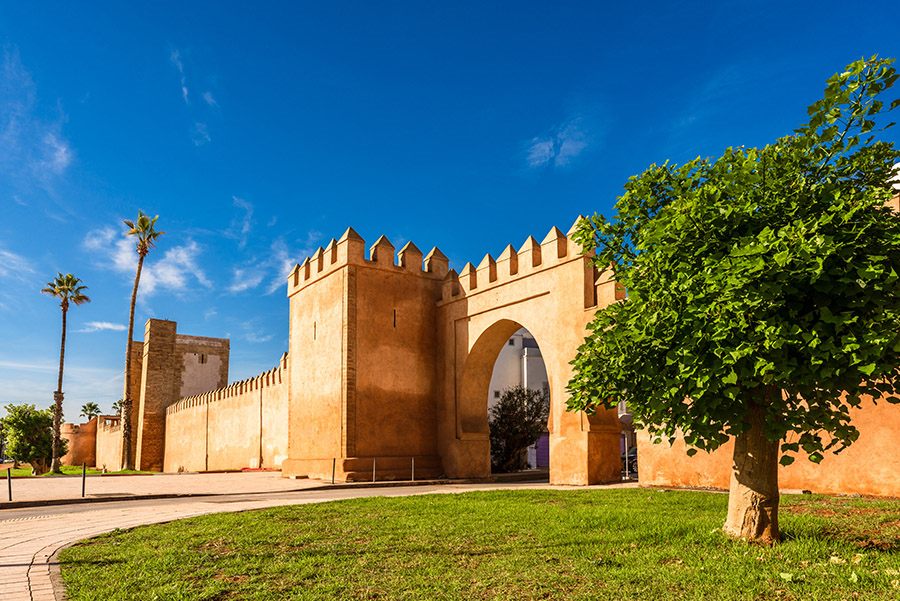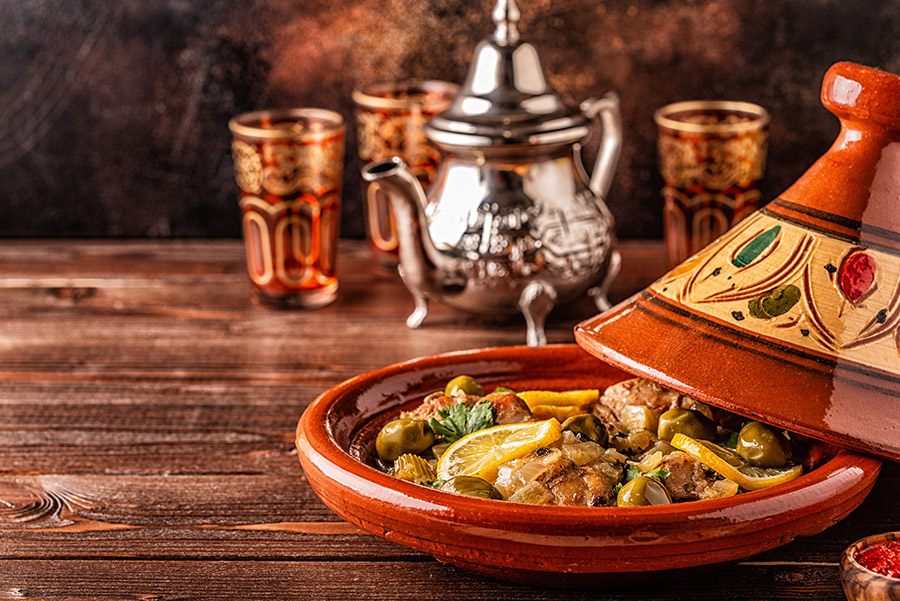The Rabat-Salé International Airport is one of the main hubs in Morocco. It is located just 7 km from the capital city of Rabat and less than 100 km from Casablanca. The airport serves both civilian and military functions as it is the headquarters of the Moroccan Air Force. During World War II, the airport was used by the United States military due to its strategic military positioning. In 2012, a new terminal was inaugurated, and the annual passenger traffic reaches around 3.5 million, highlighting the airport’s significance. The facility offers a variety of services, including banks, ATMs, bars, shops, and car rental agencies.

The city of Salè
Just 15 minutes from the airport lies the city of Salé, which preserves a rich historical, artistic, and cultural heritage that can be appreciated by visiting the Medina and the Mellah. Throughout the centuries, the city of Salé has competed with the capital, Rabat, especially during the medieval and modern eras when both cities experienced a prosperous period economically and culturally. Nowadays, Salé showcases magnificent architecture capable of evoking its colonial past. Additionally, its historic center holds ancient traditions that have developed over the centuries, creating a united and supportive local community that shares linguistic and cultural specificities. Salé is a city that is highly recommended to visit if one intends to appreciate the myriad facets of Arab culture. For this reason, before departing for Morocco, it is possible to book a rental car through the service offered by Acarent so that upon arrival at the airport, one can conveniently pick up the means of transportation to travel independently.
Monuments, Cuisine, and Traditions
In modern times, Salé gained significant importance due to its geographical location. It became the capital of the maritime republic led by the notorious Barbary corsairs. Later, Salé fell under the rule of the Alawite people, whose legacy is still visible through the distinctive architectural style of the main mosques located in the historic center. For this reason, visiting the old city is highly recommended, as it allows one to admire some beautiful monuments, including the Great Mosque of Salé, whose architecture showcases the style of the Almoravids who constructed it during the medieval era. The city also offers a lot in terms of gastronomy, as its traditional cuisine reflects Andalusian influences and primarily consists of meat-based dishes. Moreover, there are plenty of opportunities to savor the exquisite Couscous, often accompanied by Tfaya, a dish made with caramelized raisins and onions, garnished with eggs and almonds. Another delightful delicacy is Makroud, a triangular-shaped pastry made from semolina flour combined with dates, orange zest, and cinnamon. In addition to the culinary tradition, the Lantern Procession is worth mentioning, an event introduced by Ahmad al-Mansur in medieval times, which is still celebrated annually. This celebration has led certain families to excel in candle-making, and over the centuries, numerous families have achieved great success in this field nationally. The combination of historical, artistic, and cultural richness makes Salé a destination to visit and not to be missed if one intends to have a vacation immersed in knowledge and good food.


